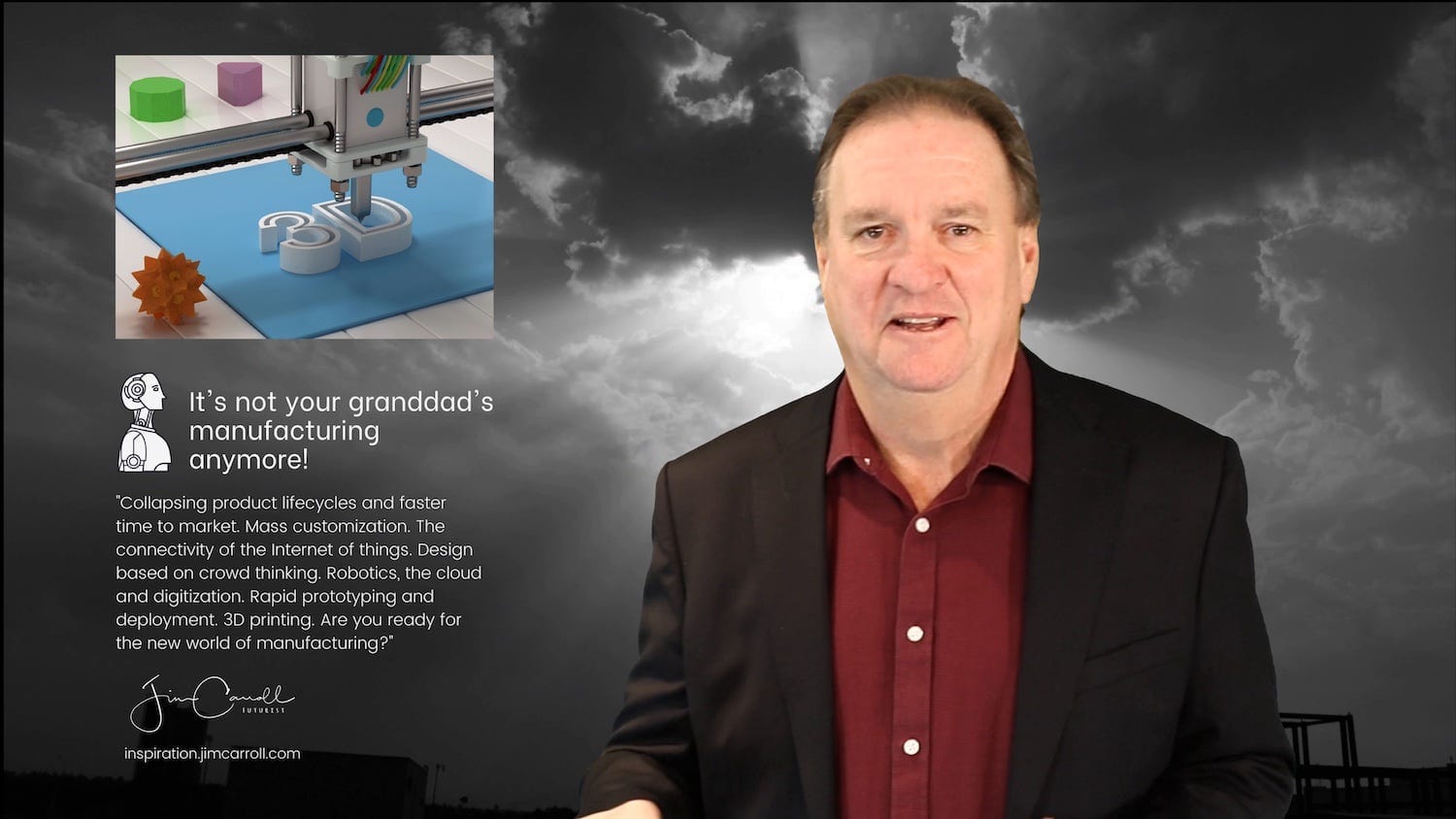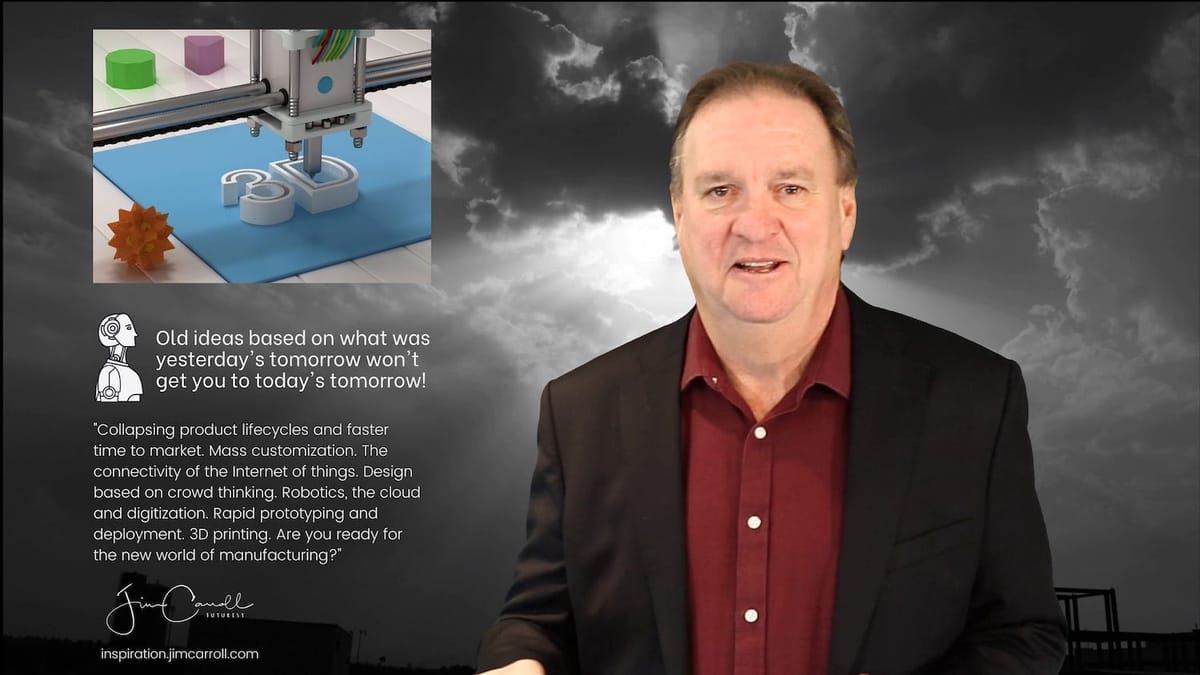Version 1 went like this.

Here's a simple fact - today's tomorrow is pretty different from yesterday's tomorrow if that makes any sense. Let me explain.
One of the in-person events I've got coming up is a talk on the future of manufacturing, so I'm doing another deep dive into the latest trends impacting the sector. The keynote description that I've been using runs like this:
"Collapsing product lifecycles and faster time to market. Mass customization. The connectivity of the Internet of things. Design based on crowd thinking. Robotics, the cloud and digitization. Rapid prototyping and deployment. 3D printing. Are you ready for the new world of manufacturing?"
Clearly, it's not your granddad's manufacturing anymore! Those were the trends that were cutting edge but ten short years ago - today, they're going mainstream at a blistering pace. What was but a concept then is already today's reality! It's pretty the pace of change has picked up within the sector to an astonishing degree.
Small examples provide insight into big changes. Case in point - 10 years ago, I spoke at an industry conference about the trend towards 3d printing, or additive manufacturing; to the audience of manufacturing executives, it seemed like some sort of science-fiction-like idea that might takes years to make its impact felt. Today, my son regularly orders advanced parts and equipment for his smart garden setup from various custom 3d manufacturers. He's doing precisely what I was speaking about as being the future just a short few years ago. 3d printing? It's already going mainstream in aerospace, automotive, and countless other industries - it's moved from 'conceptual' to 'practical.'
I'm seeing the same thing in my latest research in every single industry I spend time on - what were once yesterday's crazy ideas, bold concepts, and complex futures is today's reality. It's not yesterday's tomorrow anymore - it's now today's tomorrow, and the two are quite fundamentally different. The future keeps catching up to us, coming at us with greater speed and intensity.
The impact of the pandemic has made this transition even faster! Some months back, I was interviewed by the folks at the Robot Industry Podcast and provided an outline of the three different timelines of manufacturing trends. You can find it here. https://jimcarroll.com/2021/11/robotics-manufacturing-and-the-future-what-comes-next/
Manufacturing – What we were talking about pre-Covid?
- The rapid acceleration of new methodologies
- Additive/3d
- iiOT in the factory
- Rapid product prototyping and design
- Impact of crowdfunding/crowdsourcing on design/product
- The rapid emergence of new competitors
- Skills shortage; rapid acceleration of skills
- New material science
- Embedding intelligence/connectivity into a product
- Managing the new Amazon dominance
How did Covid shift the axis of our universe?
- A shift from just-in-time to just-in-case
- Supply chain volatility
- Price Inflation
- The rapid adoption of new methodologies (i.e. 3d printing for swabs, and masks)
- Robotics – emerging from the cage – distancing
- Acceleration of production visibility initiatives
- Rapid repurposing/reinvention of production
- Greater focus on cost management (rapid acceleration of cost)
- Faster alignment to external partnerships (pack and ship, etc)
- Faster acceleration of big trends (electric cars, autonomy, virtual)
What Will We Be Talking About in Manufacturing Post-Covid?
- Chief Resilience Officer
- Potential de-globalization strategies
- Redundancy and agility
- Banking / how to keep what we learned in Covid
- Accelerating robotics
- 6. New workforce decisions/challenges (hesitancy etc)
- A need for better supply chain insight
- Accelerating direct-to-consumer strategies
- Re-examination of logistics (shipping, airline)
- The new emphasis on security (ransom attacks etc)

